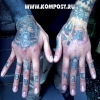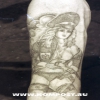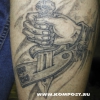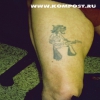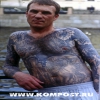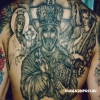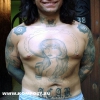

Criminal
|
Since the appearance of the Soviet regime, the tattoo was recognized as a bourgeois hobby, was condemned and remained in the status of an attribute of the criminal world, tenaciously holding on to their own traditions. It should be noted that in the 20's, the transformation of the criminal world of the Soviet Union and the emergence of many camps, led to the fact that the criminal tattoo changed. New motives appeared artistic and anti-communist protest tattoos. Abbreviations and symbols of a new community of thieves had changed. During the recovery of criminal romance in the middle of the 20th century traditions did not undergo changes until the collapse of the Soviet Union. The emergence of new trends in the 80’s led to skepticism and sometimes outright aggressive attitude, occasionally spilling out to clarification of the relationship between subcultures and the criminals, but by the end of the 80’s, innovator tattooing trends found common points of understanding on the basis of anti-social position in relation to the semi-official organs, and further progress of artistic aspects of tattooing did not cause much protest. The last boom associated with the old traditions fell at the beginning of the 90s, when due to the amnesty a mass the criminals started covering the old motives with art tattoos. In the late 20th century due to the transformation of society and the relationship the old traditions began to fade away despite some attempts to modernize the style. Currently criminal tattoo of the USSR, which developed in isolation from the outside world, is in a status of being complete, self-sufficient, but perhaps the history of body painting is unfinished.  go back to "Tattoo" go back to "Tattoo" |

